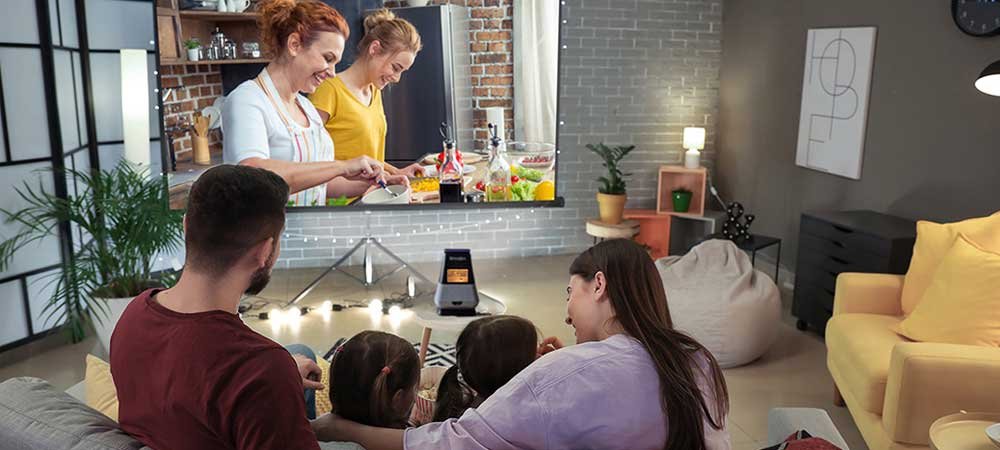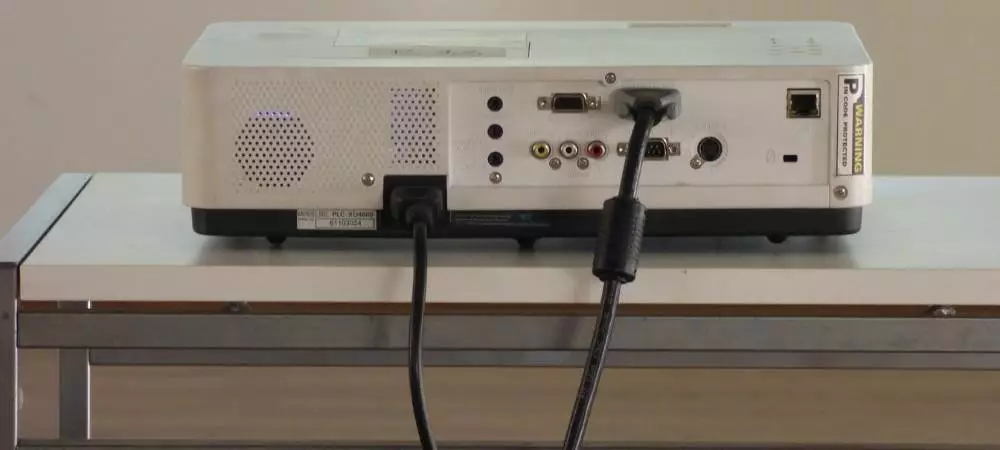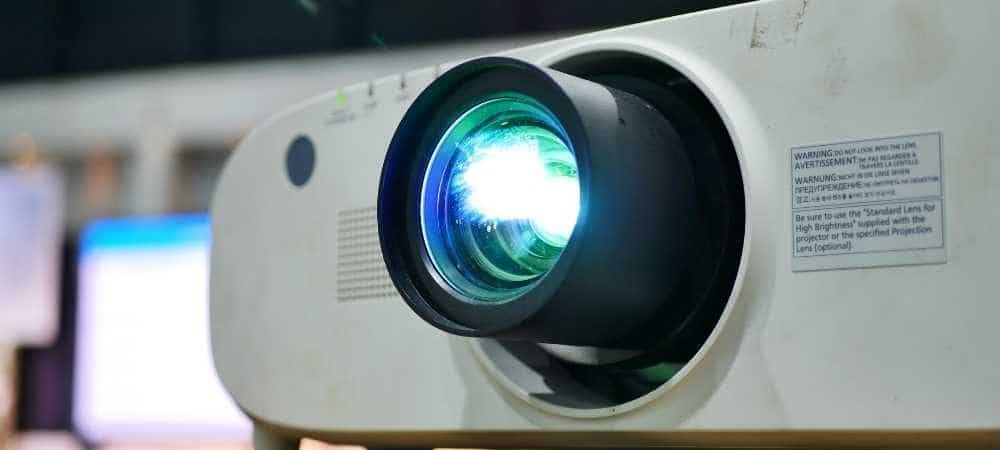If you are planning to set up a movie theatre in your backyard, you must be curious to know how to use an outdoor projector during the day? Projectors are bliss for anyone looking ways to enjoy the outdoors and making the best use of their backyards.
“In 2022 the global market for outdoor projectors is estimated to be million USD .” According to Marketwatch.
For using an outdoor projector during the day, you must have a minimum of 3000 lumens for cloudy days. However, 5000-lumen projectors are the best fit for daytime viewing. Challenges such as creating shades and fixing the projector screen can only make your outdoor movie watching during the day pleasant.
Table of Contents
Important Features for Outdoor Movie Projection– At Glance
- A projector with minimum of 3,000 lumens, or over 5,000 lumens for best results.
- A reflective projector screen.
- You can use an inflatable or hanging screen for most weather conditions.
- Place the screen in a shaded part of the garden/backyard.
- A movie screen with a 160-degree viewing angle helps for big gatherings.
- Avoid the sunlight reflections over the screen.
Things Require for Outside Projection During the day:
Here are some of the important considerations for using a projector outside during the day:
1. Make Sure to Invest in Projector with Good Lumens
The type of projector you are going to use during the daylight makes a lot of difference. With a wide range of projectors available in the market, not every projector is able to accommodate the bright light conditions.
Lumens play an important role in choosing the best outdoor projectors.
“Lumens” is used to measure the brightness of projectors. Although “watts” was once a unit of measurement, Watts would actually measure how much energy a particular light bulb uses. The energy used would indicate the brightness of the bulb.
‘Watts’ has been replaced by an energy-efficient light bulb. Today, however, energy-efficient lightbulbs can produce brighter lights than regular bulbs and use less energy.
The unit of measurement of light is now the lumens. One lumen refers to the brightness of light emitted from one source. The brighter the light, the more lumens it emits.
Is there a Difference Between Lumens and Lux?
The brightness of a projector is measured in Lux or Lumens. While both the terms are often used interchangeably but there is a considerable difference between the two. One lux is equal to one lumen per square meter.
You will need different levels of lumens depending on how you use your projector. A projector with at least 3,000 lumens is required if you plan to use your projector outdoors for a movie night. A projector with at least 5,000 lumens would be a good choice for daytime viewing.
The price of a projector will generally go up if it has more lumens.
2. Look for Favorable Weather Conditions
Utilizing your outdoor space make sense but the weather conditions also matter. You can put up your projector and screen on any size surface, including a patio, veranda or garden lawn. Unless the weather conditions are favorable, you will not be able to enjoy movies.
Avoid extreme rain or windy weather. The low light outside may allow you to view the film, but wind can cause serious damage to your projector screen. Rain and water are also capable to damage your projector.
A cloudy day with calm wind and a low sun could be the perfect day to view a movie in your backyard with your projector. There will be days when you want to see your movie regardless of the weather.
If you are planning to watch movies outdoor in sunlight, consider using shadier locations to get the desired projection.
3. Choose the Right Time of Day
It is important to choose a time to view your film, regardless of the weather conditions. You don’t want to limit your viewing to sunsets, sunrises, or evenings but specific timings offer you greater chances to see the movie without any obstacles. Bright sunlight may ruin your experience as the projector may turn incapable of producing clear images.
You might consider tents to shade your movie from the sun.
4. Find out What Type of Projector Screen You Have
Now that you have the perfect projector, next comes the projector screen as an important component for the right outdoor projection, let’s take a look at creating the backyard theater of your dreams.
Here is a quick overview of the different types of projector screens and how to place them for the best viewing results. You should consider which projector screen is the best fit. Choosing the right type of screen is crucial for good projection.
a) Inflatable Projector Screens
Are you looking for an all-weather screen that can be placed easily in your backyard? Well, Inflatable Projector screens are an excellent choice
This type of screen is great for watching your movie in rainy or windy conditions.
It is crucial to verify that these screens are portable when shopping for them. Many models can also be self-inflated and are ready to go in no more than five minutes.
Inflatable screens are a great option for outdoor viewing as they are portable, inexpensive, quick, and easy to set up. It barely takes 5 minutes to inflate the screen and deliver an impeccable movie-watching experience.
b) Tripods Projector Screens
Tripod-based screens are the second option. These screens are much cheaper and easier to set up. But if you are looking for a screen for uneven surfaces or windy weather, you should strictly avoid the tripod projector screens.
(c )Hanging Projector Screens
The last type of movie screen to be considered for outdoor projection is the hung projector screen. These screens can be either fixed or temporary. They are flexible to place on any surface or wall.
Other Considerations
Here are the other considerations regarding the projector screen selection for better outdoor projection:
(a) Make sure your projector has strong reflective capabilities
Pairing the right screen is important to make the most out of the projector’s capabilities. For high lumen projectors, a screen with strong reflective capabilities can do wonders. How?
These reflective screens can withstand the sun and produce more vivid, precise, and clear images that are visible to the audience. These features can be costly, but they will allow you to watch your film outside during the day.
(b) Make Sure to Clean the Screen
No Matter how good a projector and how impressive the projector screen you own. Unless the projector screen is clean or you clean the projector lens, the resulting projection will not be up to the mark.
Hence, you should clean your screen properly before installation. The screen that you use with your projector may get dirty over time and develop stains over time. Hence, periodic cleaning of your outdoor projector screen is a must.
It can make it very difficult to view your movie if the screen gets dirty. It can also be very difficult to recognize colors and shapes if the projector screen isn’t of the same quality.
To clean the projector if this happens, you can use lukewarm warm water. Cleaning the screen using harsh chemicals is a strict no. There are specific ways to clean the outdoor projector screens without damaging them.
(c ) Choose a screen that offers a 160-degree viewing angle
You should ensure that your screen has a 160deg viewing angle if you plan on watching your next TV show, movie, or football match with others.
This technology allows people to view the film from the sides and back of the screen as though they were in the middle of the screen.
5. Use of External Speakers
While most of the projectors come with inbuilt speakers but they are not powerful enough to combat the background noise and large area exposure for outdoor theater. Adding an external speaker to your home theater helps with louder sound and a better movie experience.
As most modern projectors come with Bluetooth capabilities, you can choose Bluetooth-enabled speakers to connect easily.
Find the best outdoor location to set up your home theater
As you are up with all the requisites, a good projector and a compatible screen next comes the right location to make the things work:
Choosing the outdoor location wisely helps in elevating your overall movie experience. Even the projectors with average lumens can work magically if you choose the right place for its placement.
You can use the sun’s position to help you choose the best garden location for the console, regardless of whether you have a patio, large lawn, or small balcony.
If the sun is behind the projector, then the colors might still look great. If the light is too strong, it can cause blindness after you have moved in that direction for the entire film.
Keeping the sun behind the audience will also reduce the quality of the images. This light could cause the audience to be blinded and decrease the projector’s power.
Your best bet is to keep the sun at your side. You might have to deal with problems if the sun is too strong or your projector isn’t powerful enough.
(a) How to Choose the Best Location for an Outdoor Projector
Depending on the availability, you can choose the ideal location for your outdoor projector. It is important to find a spot that suits your particular projector, how many lumens it has and where your projector screen can be placed.
For projectors with lower lumens you will want to pick a more shaded spot. However, a very high lumen projector can allow for greater flexibility. To connect with a power source, you can use extension or long power cord.
(b) Create Shade in Your Garden
You might have to artificially create the perfect spot if you are unable to locate a suitable location. You will also need to shade the projector and hang the screen.
A veranda, pergola, or gazebo are ideal for covered space. A wedding venue or event space, for example, must be able to turn on the projector regardless of the weather. For private and business purposes, waterproof gazebos make the best choice.
(c )Part-Shade and Full Sun
Your projector’s brightness is competing with the sun’s. This means that the amount of sunlight your projector receives will affect its performance. For a projector that is exposed to the sun all day, you will need more lumens, while a part-shade or full-shade projector will require less.
Frequently Asked Questions
Some Frequently Asked Questions On Outdoor Projector Use:
1. What Do I Need To Play Movies Outside?
A high-lumen projector, a compatible screen, powerful speakers, and a movie player of your choice is all you need to play movies outside.
2. Can I Put High Lumen Projector under Direct Sunlight?
Have you ever tried seeing your mobile under the Direct Sunlight? If yes, you must have noticed the visibility issues. The same is applicable to the projectors. No matter how much high lumen projector you buy, the sunlight will always be stronger than the projector’s lumen. Hence you should never place any projector under direct sunlight.
3. What is the Best Screen for Outside Projection?
Inflatable screens are the best option for outside projection. They are affordable, portable, and come in various sizes to choose from. They are easy to install and the whole process of installation takes less than 5 minutes to complete.
Conclusion
Although it’s not difficult to set up a home theater, it’s important to make sure that the projector is powerful enough to deliver high-quality images. Using an Outdoor projector during the day is possible with expected projection clarity but only with the right strategies.
All you need is a high-lumen projector and a compatible screen to start with. Always pay attention to the location and the placement of your projector to get the right results.

I am Charlie and founder of Projectorpick.com. I always find a huge gap on the internet between the audience and the relevant information for Home Theatre available on the internet. I saw many forums where people were bombarding several questions regarding Home Theater and ending up disappointed with no relevant answers. Keeping this in virtue, I decided to start this blog to address all such unattended questions.




